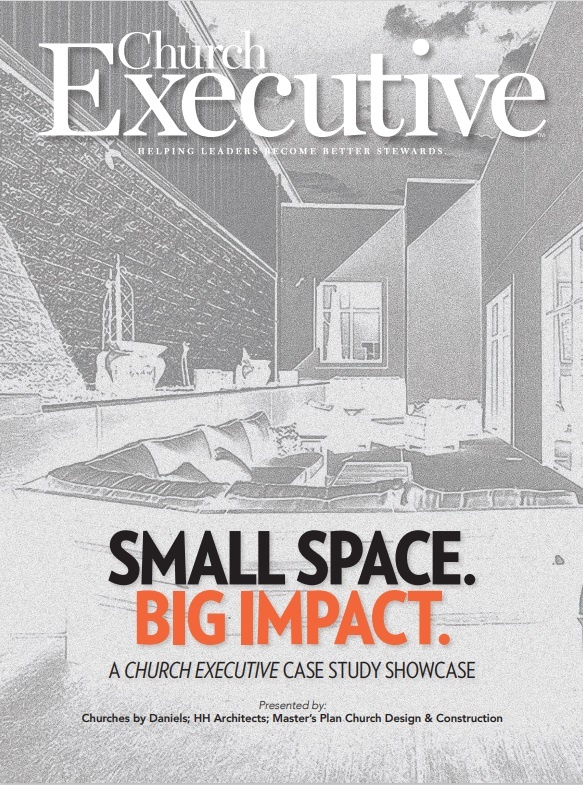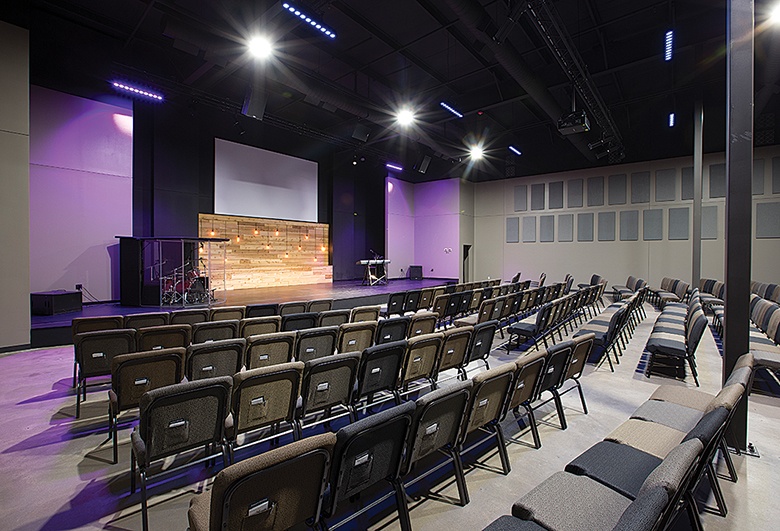
 By Alaina Butler
By Alaina Butler
We’ve all been there: either your facility is outdated and lacks functional elements, or you’ve simply outgrown it.
While you’re probably wishing you had more space, acknowledging that you don’t have a lot of “room to maneuver” is the first step to intentionally using the area you do have to create lasting impact.
There are lots of ways to use small spaces within your church without sacrificing aesthetics for functionality. In this article, we will explore some of the ways you can use the space you have — right now — to create maximum impact well into the future.
Work with your space, not against it

Reduce clutter: Wherever possible, keep spaces clean and tidy in your facility. This especially applies to anywhere that first-time visitors will frequently see, such as your main lobby or gathering space, any coffee shop area, and your children’s check-in. Doing so not only helps your church stay clean but makes it feel like there is more room, since not every available surface is occupied.
Add light: Maximize natural lighting wherever possible to keep your facility open and airy. In places where you don’t have the option of natural lighting, make sure to add artificial lighting where necessary to make the space feel brighter. This could mean additional overhead lighting or something simpler — floor lamps in darker corners; table lamps on end tables in your gathering areas; and uplighting or spotlighting in your sanctuary.
Other options include adding some lit-up theming on the wall or using wall spaces for décor.
Multipurpose space: An easy way to better use a small church space is by choosing flexibility. Swapping out stackable chairs in your sanctuary is a good example. Doing so offers more options for using this space which might otherwise be limited by fixed seating such as traditional pews or theater seating. With stackable seating, you can flip the room to accommodate round tables for youth meetings or mid-week gatherings, essentially doubling your available space by using it in multiple ways.

Comfortable seating: This might seem counterintuitive, but don’t sacrifice comfort for the sake of additional seating. Especially in any kind of gathering space, it’s more important to have a little less seating that people actually want to use than it is to have more seating that no one wants to occupy for more than a few minutes; the latter will only crowd standing space.
Opt for armchairs versus sofas to create small “pockets” where your members can do fellowship, hold fussy babies, find overflow seating during service, or participate in a small bible study or a community group.
Don’t neglect your corners
When you’re considering the space(s) that you currently have, don’t be afraid to reimagine wasted, unused spaces. A small alcove or corner can be perfect for a church merch kiosk or a connection area for visitors. If you have the resources, consider adding a built-in cabinet with a tabletop so that guests can easily grab information and fill out connection cards; the cabinet below can be used for storage.
Another good use of a smaller area is a church merch or swag shop. With minimal expense, you could easily get a clothing rack for tee shirts and hoodies and a small counter or shelving unit for mugs, hats and water bottles. As you can see (above, right), this church used a space next to its children’s check-in that would otherwise remain empty and unused. The location being right inside the main entrance is a bonus for its high traffic and visibility.

Think outside the building
Depending on your location and climate, outdoor space can be a popular solution for additional gathering space and can even help relieve some of the stress of a church building that’s at capacity. Outdoor spaces invite creativity, enabling your church to host a variety of events you might not be able to otherwise. It can be a hangout space for youth members, a gathering space for a community group, or even a small, informal reception area where new members can learn more about your church.

Choose durable outdoor furniture that will last in all kinds of weather. If possible, add coverings such as a pergola or an awning (sail shades, for example) for even more flexibility and to lengthen the life of your seating.
No matter what space you’re currently in, you can and should make the most of it. With a little creativity and resourcefulness, your facility can become a thriving home where ministry grows and reaches the community more effectively.
Alaina Butler is Director of Marketing & Public Relations at Churches by Daniels Construction in Broken Arrow, Okla.


